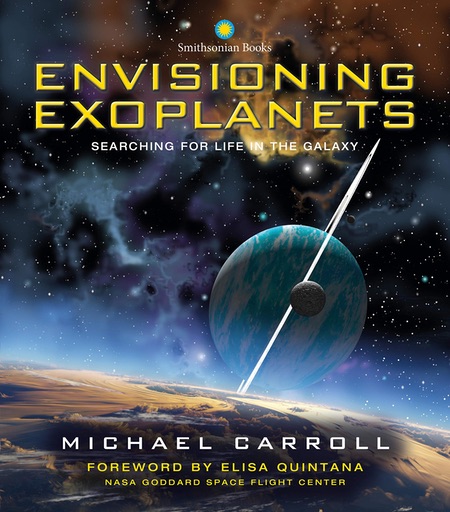Review: Envisioning Exoplanetsby Jeff Foust
|
| On the spectrum between science and fiction, these fall much close to the former than the latter, since the illustrations are based on what we currently know about those planets, and offer one vision of what they may look like. |
In Envisioning Exoplanets, author and artist Michael Carroll looks to combine science and art to describe our current knowledge of exoplanets. The text of the book provides a good overview of the history of exoplanet science, how exoplanets are discovered, and a discussion of some of the most promising candidates for “Earth-like” exoplanets. Much of that is familiar territory for those who have been following the subject, although there are some interesting and less well-known elements to that, such as the concept of the “Earth Similarity Index” proposed by scientists to estimate how much an exoplanet might be like the Earth based on its size and the stellar flux it receives from its parent star.
The real draw of the book, though, is the art. The book features dozens of illustrations of what some exoplanets may look like, from Proxima b to the various Earth-sized worlds orbiting TRAPPIST-1. The book also includes illustrations of more exotic exoplanets, from “hot Jupiters” orbiting close to their stars to “ploonets,” or moons stripped from larger exoplanets that have become planets.
The illustrations are beautiful, but they’re also, at best, speculation about what those worlds look like. That’s not a bad thing, though. On the spectrum between science and fiction, these fall much close to the former than the latter, since the illustrations are based on what we currently know about those planets, and offer one vision of what they may look like. They do, though, stir the imagination, showing both how strange the universe is but also, potentially, how familiar some exoplanets may be. And, they let one wonder what else is out there, yet to be discovered.
Note: we are temporarily moderating all comments submitted to deal with a surge in spam.
